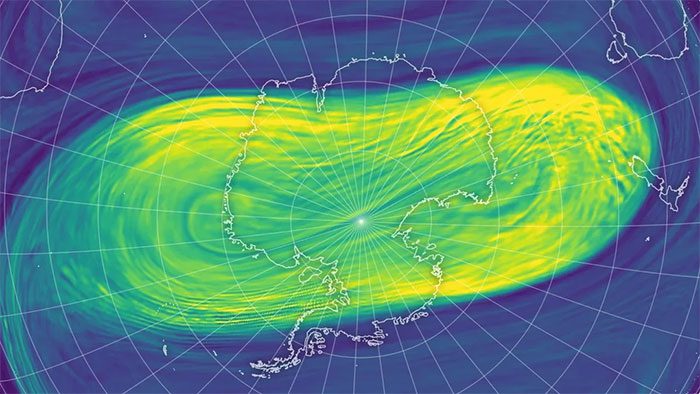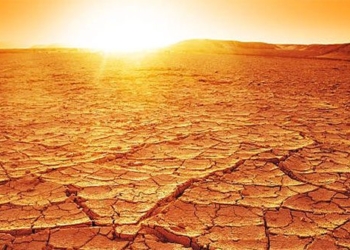Unusual warming events and a bizarre polar vortex this year have altered the cycle of the ozone hole. Scientists warn that we should not celebrate this phenomenon too soon.
Rare and unexpected warming events in Antarctica have affected the polar stratospheric winds, slowing down the formation of the annual ozone hole above this icy continent.

Polar vortex appears in Antarctica this year (Photo: NASA’s Earth Observatory).
Ozone is a gas that forms a layer in the stratosphere, the middle layer of the atmosphere located at an altitude of 20 to 50 kilometers above the Earth’s surface. This ozone layer acts as a shield protecting life on Earth from harmful ultraviolet rays emitted by the Sun.
The ozone hole over Antarctica typically appears each spring in the Southern Hemisphere, from September to November. Data from 1979 to the present shows that the ozone layer above Antarctica usually begins to thin and develop a hole from August, but this year, this phenomenon started late, not until the end of August.
The cause is two warming events that altered the polar vortex. In July and August alone, temperatures in the stratosphere above Antarctica rose to 15 and 17 degrees Celsius. Such warming events are extremely rare in this continent but are increasingly occurring more frequently.
Scientists are still unsure about the exact causes of these two warming events, but they have noted unusual weather conditions in the troposphere, the atmospheric layer just above the ground, in Antarctica during July, with record-high temperatures.
“Sea surface temperatures are also fluctuating, but pinpointing the reasons for these events is extremely difficult,” said atmospheric scientist Paul Newman at NASA’s Goddard Space Flight Center.
The specific conditions for the formation of the ozone hole include strong polar vortices, solar radiation, and ozone-depleting substances (ODS).
A strong polar vortex is characterized by swirling winds and very low temperatures. This is the condition that caused last year’s ozone hole over Antarctica to be larger than the area of North America.

Two images showing air temperature in Antarctica illustrate how the polar vortex operated in 2023 (left) and 2024 (right). (Photo: NASA’s Earth Observatory).
However, instead of being round and strong this year, the polar vortex is weak and elongated, causing the ozone depletion process to slow down, even as August arrives, marking the end of polar night and the return of sunlight.
Ozone depletion typically begins at a band around the edge of the vortex and gradually spreads inward to create a hole lasting through the entire Southern Hemisphere spring. This hole disappears as temperatures gradually rise in the summer in the Southern Hemisphere, usually around December.
The Antarctic ozone hole originally formed due to human activities pumping excessive amounts of ODS into the atmosphere. Many countries have now signed international treaties banning these substances, including chlorofluorocarbons (CFCs), which were previously used in refrigerators and air conditioners.
There is evidence that the ozone hole is healing, but scientists believe that the delayed appearance of this hole compared to the usual cycle cannot immediately be considered a recovery of the ozone layer. The health of the ozone layer in the stratosphere depends on a complex interplay of chemical and meteorological factors.
If countries continue to comply with the ban on ODS, theoretically, this hole will heal within 40 years. During this time, its size and activity will be influenced by meteorological fluctuations, both natural and artificial ODS sources, along with the effects of climate change.




















































